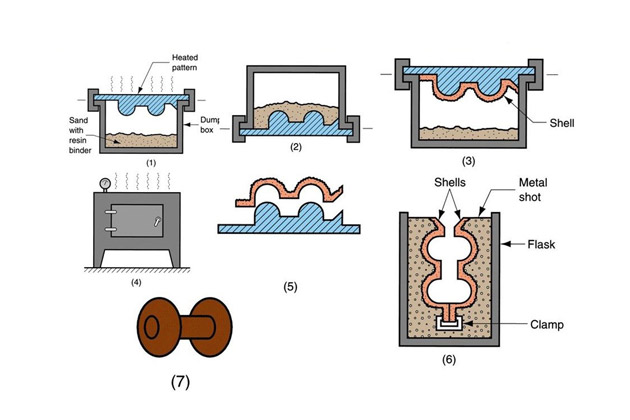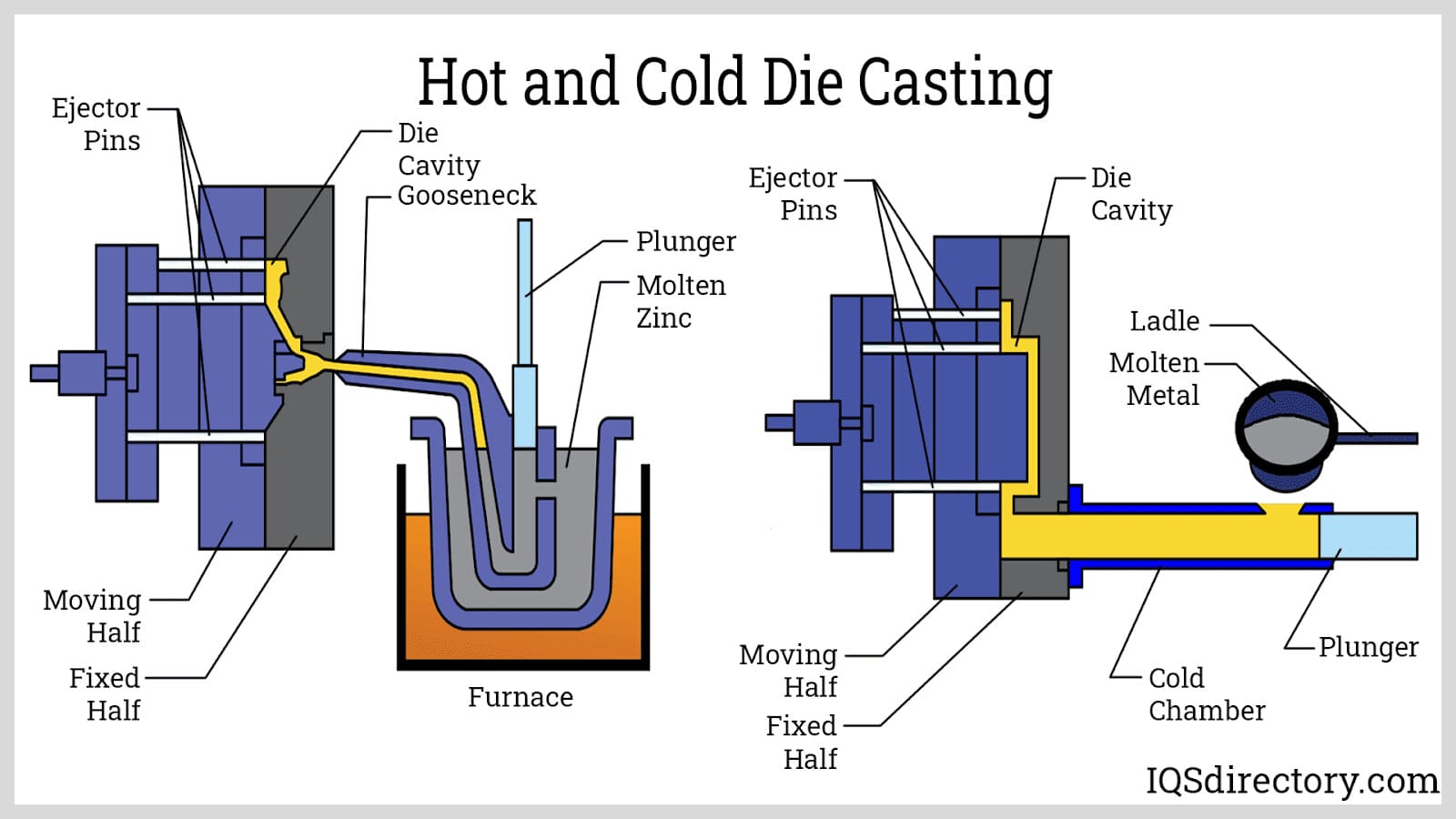How an Aluminum Casting Manufacturer Delivers High Durability
Wiki Article
The Important Usages of Light Weight Aluminum Casting in Different Manufacturing Sectors
Light weight aluminum Casting is essential to many making industries, offering one-of-a-kind advantages such as lightweight durability and deterioration resistance. Its applications cover from automotive parts to aerospace parts, boosting effectiveness and performance. The versatility of light weight aluminum Casting supports detailed layouts in consumer products and robust structures in industrial machinery. As sectors progress, the significance of light weight aluminum Casting remains to expand, prompting exploration right into its future advancements and advancements.Automotive Market Applications of Light Weight Aluminum Spreading
As the automobile industry significantly focuses on light-weight products for boosted fuel efficiency and performance, light weight aluminum Casting becomes a necessary manufacturing method. This process permits for the development of complicated geometries that are hard to achieve with traditional manufacturing methods. Elements such as engine blocks, transmission situations, and suspension parts profit noticeably from light weight aluminum's reduced thickness and high strength-to-weight ratio.By making use of aluminum casting, manufacturers can produce lighter automobiles that consume much less gas while keeping architectural stability. The convenience of aluminum additionally permits a series of surface area coatings and design alternatives, making it possible for visual and functional improvements.
In addition, light weight aluminum's resistance to rust prolongs the lifespan of automobile components, minimizing upkeep requirements. Aluminum Casting Manufacturer. As car manufacturers seek to fulfill strict discharges policies and customer demand for performance, light weight aluminum Casting plays an essential function in the development of automobile technology, making certain cars are not only lighter but also more sustainable and reliable
Aerospace Parts and Aluminum Casting
A significant portion of the aerospace sector counts on light weight aluminum Casting to generate vital parts that call for both strength and lightweight residential properties. The versatility of light weight aluminum allows suppliers to produce complicated geometries crucial for modern aircraft design, such as engine places, structural structures, and fuselage parts. Light weight aluminum Casting methods, consisting of sand Casting and pass away spreading, enable the production of get rid of high dimensional precision and superior surface coatings.The light-weight nature of aluminum is vital for enhancing fuel performance and total performance in aerospace applications. Additionally, light weight aluminum's resistance to corrosion adds to the longevity and integrity of components based on extreme ecological conditions. As aerospace modern technology advances, the need for cutting-edge aluminum Casting solutions remains to grow, driving study and development in casting approaches and alloys. Inevitably, aluminum Casting plays an important duty in meeting the strenuous requirements of security and performance within the aerospace sector.
Durable goods: The Role of Aluminum Casting
While durable goods may usually seem less complex than aerospace components, light weight aluminum Casting plays a necessary duty in generating a large range of everyday products. This versatile production process allows the creation of lightweight, durable products that are basic to modern living. Typical applications include cookware, such as frying pans and pots, where aluminum's exceptional thermal conductivity improves cooking effectiveness - Aluminum Casting Manufacturer. In addition, consumer electronics frequently include light weight aluminum parts for their stamina and visual allure, adding to both capability and layoutAluminum Casting additionally sustains the production of auto components like wheels and real estates, making cars lighter and more fuel-efficient. The capacity to produce intricate shapes and exact measurements permits suppliers to introduce constantly, meeting customer needs for high quality and performance. On the whole, light weight aluminum Casting stays a vital element in the durable goods market, balancing durability, cost-effectiveness, and versatility in an ever-evolving market.
Industrial Equipment and Devices Manufacturing

The flexibility of aluminum Casting makes it possible for the production of detailed designs, as a result promoting the integration of sophisticated innovations into machinery. Components such as housings, structures, and adapters are usually generated through this approach, guaranteeing accuracy and integrity. In addition, light weight aluminum's resistance to rust prolongs the life-span of tools, lessening maintenance costs and downtime.
As industries evolve, the need for ingenious machinery remedies proceeds to climb, making light weight aluminum casting an important technique in the manufacturing of high-performance commercial equipment. This fad highlights the continuous significance of light weight aluminum Casting in driving innovations within the market.
Marine Market Innovations With Aluminum Spreading
The aquatic sector has actually embraced light weight aluminum casting to enhance vessel layout and performance. Technologies focus on developing lightweight parts that improve gas efficiency, while the material's deterioration resistance and toughness contribute to longer-lasting aquatic applications. These innovations show a significant shift in the direction of optimizing both performance and sustainability in aquatic engineering.Lightweight Vessel Elements
As the aquatic industry progressively focuses on efficiency and performance, light-weight vessel elements made via aluminum Casting have arised as an important innovation. These elements especially reduce the overall weight of vessels, improving gas performance and rate. The precision of aluminum Casting enables for the development of intricate geometries that typical manufacturing methods struggle to accomplish, causing maximized layouts customized for efficiency. In enhancement, the inherent strength-to-weight ratio of light weight aluminum warranties that vessels keep architectural stability while profiting from weight decreases. This development not only enhances maneuverability however likewise permits boosted freight capability. Therefore, makers are taking on light weight aluminum Casting methods to satisfy the progressing needs of the affordable aquatic market, leading the way for more reliable and lasting vessel styles.Rust Resistance Advantages
Advancements in aluminum Casting not only boost light-weight vessel elements however also greatly boost rust resistance, a vital aspect in the marine environment. The one-of-a-kind properties of light weight aluminum, integrated with sophisticated Casting techniques, cause elements that endure harsh deep sea conditions without giving in to corrosion or deterioration. This durability considerably extends the life-span of aquatic vessels, decreasing maintenance prices connected with corrosion-related damage. In addition, aluminum's all-natural rust resistance is typically enhanced with protective layers and anodizing procedures, making it a suitable choice for numerous marine applications. As the sector remains to introduce, the combination of light weight aluminum Casting innovation functions as a necessary service for suppliers aiming to enhance the longevity and dependability of aquatic equipment in requiring settings.Improved Durability Functions
Countless improvements in light weight aluminum Casting have actually brought about significantly boosted resilience functions in aquatic applications. These innovations include the advancement of high-strength light weight aluminum alloys that withstand extreme conditions, such as deep sea direct exposure and high-impact scenarios. Boosted Casting strategies have decreased defects, resulting in components that preserve architectural integrity over longer periods. The intro of advanced coatings also offers additional protection against abrasions and corrosion, prolonging the life expectancy of marine equipment. Furthermore, lightweight yet robust aluminum spreadings facilitate far better gas performance and ability to move for vessels. Subsequently, suppliers can attain both efficiency and security requirements while decreasing maintenance costs, making light weight aluminum casting a recommended selection in the affordable marine industry.Architectural and architectural Usages of Light Weight Aluminum Casting
Aluminum Casting plays a pivotal duty in structural and building applications, providing both aesthetic allure and practical strength. The versatility of light weight aluminum enables lightweight structures and intricate layouts, making it a preferred product in modern-day design. From decorative exteriors to structural assistances, aluminum spreadings provide resilience and resistance to deterioration, which is vital in various ecological conditions.In structural applications, light weight aluminum castings can be made use of in columns, beams, and trusses, ensuring stability while decreasing weight. This characteristic is especially advantageous in skyscraper buildings and bridges, where decreasing the total lots can improve safety and security and performance. In addition, light weight aluminum's recyclability contributes to sustainable building methods, lining up with modern ecological standards.
Making use of aluminum Casting in style not only meets functional demands yet additionally improves the visual influence of structures, adding to the total visual of public rooms and city landscapes.
Future Trends in Aluminum Casting for Manufacturing
As the building and architectural applications of light weight aluminum Casting remain to increase, the production sector is poised for significant improvements. Advancements in casting strategies, such as 3D printing and progressed mold and mildew modern technologies, are anticipated to boost accuracy and lower preparations. Moreover, the growing focus on sustainability is driving the growth of environmentally friendly Casting practices, including making use of recycled aluminum and energy-efficient procedures. The integration of smart modern technologies and automation in casting centers will certainly simplify procedures and enhance product uniformity. In addition, the vehicle and aerospace markets are likely to enhance their reliance on aluminum Casting as a result of the material's light-weight homes and strength, advertising fuel efficiency. As these fads progress, producers should adapt to transforming demands and buy research study and development to keep competitiveness in a rapidly changing landscape. On the whole, the future of light weight aluminum Casting appears intense, with various opportunities for development and advancement.
Regularly Asked Inquiries
What Are the Ecological Influences of Aluminum Casting Processes?
The environmental impacts of aluminum Casting processes include power consumption, greenhouse gas discharges, and waste generation. In addition, the extraction and processing of basic materials add to habitat destruction and contamination, increasing problems concerning sustainability and ecological health and wellness.Exactly How Does Aluminum Casting Compare to Other Metal Casting Approaches?
Light weight aluminum casting deals advantages like lightweight buildings and deterioration resistance contrasted to other metal Casting approaches. It commonly permits complex styles and faster production cycles, making it a preferred selection in different applications.What Is the Normal Lifespan of Light Weight Aluminum Cast Products?
The regular life expectancy of aluminum actors items varies widely, usually lasting from numerous years to decades, depending on ecological conditions, usage, and upkeep. High quality of the Casting process likewise significantly affects longevity and durability.What Safety Precautions Are Essential During Light Weight Aluminum Casting?
Safety preventative measures during light weight aluminum Casting include wearing safety gear, making certain appropriate air flow, utilizing fireproof materials, and maintaining devices - Aluminum Casting Manufacturer. Additionally, employees should be educated in emergency treatments and the handling of hazardous products to avoid crashesHow Is Light Weight Aluminum Casting Recycled After Its Useful Life?
Aluminum Casting is commonly recycled by melting down the scrap product, getting rid of contaminations, and after that changing it right into new products. This procedure conserves power and sources, adding to sustainability in manufacturing and minimizing ecological influence.
As the automotive industry progressively focuses on light-weight products for boosted gas efficiency and performance, aluminum Casting emerges as a crucial manufacturing technique. A significant part of the aerospace market depends on light weight aluminum Casting to generate Aluminum Casting Manufacturer important elements that call for both stamina and light-weight homes. While consumer items may commonly seem much less complicated than aerospace components, aluminum Casting plays a necessary role in creating a broad variety of everyday products. As the aquatic sector significantly focuses on effectiveness and performance, lightweight vessel parts made via light weight aluminum Casting have emerged as an essential innovation. Additionally, light-weight yet robust aluminum spreadings promote much better fuel performance and ability to move for vessels.
Report this wiki page